Selecting the right farm tractor is one of the most significant decisions a farmer can make. The choice of tractor directly impacts the efficiency, profitability, and overall success of farming operations. With the growing variety of models and specifications available today, farmers are faced with a complex decision that requires balancing performance with financial considerations. An optimal tractor will improve operational efficiency, minimize long-term maintenance costs, and contribute to sustainable farming practices.
Farmers often struggle to determine which tractor best meets their needs. Factors such as the tractor’s power, fuel efficiency, maneuverability, and suitability for different farming tasks all play crucial roles in ensuring effective operation. Additionally, budget constraints are always a concern, as purchasing a tractor is a significant investment for any farm. Understanding these elements is key to making an informed choice, ensuring that the tractor selected is aligned with the farm’s current needs and future growth potential.
This article aims to guide farmers in making the right decision when choosing a tractor. By evaluating essential factors like farm size, crop type, engine power, and technological features, farmers can find the ideal balance between performance and cost-effectiveness. Keep reading to explore how to choose the tractor that will maximize efficiency and productivity, while minimizing long-term operating costs.
Contents
- 1 1. Key Factors to Consider When Choosing the Best Farm Tractor
- 2 2.Popular Tractor Brands and Models
- 3 3. Matching Tractors to Specific Farming Needs
- 4 Conclusion
1. Key Factors to Consider When Choosing the Best Farm Tractor
1.1 Farm Size and Type of Operations
Small vs. Large Farms:
Small Farms: Typically require tractors with less horsepower and smaller frames. Smaller tractors are easier to maneuver in tight spaces and cost-effective for basic tasks like plowing, tilling, and hauling. However, they may lack the power needed for heavy-duty tasks, limiting their efficiency for large crop yields.
Ideal Tractor Size for Small Farms: A compact or utility tractor with a horsepower range of 25-50 HP.
Large Farms: Large-scale operations demand tractors with higher horsepower to handle continuous, demanding tasks. These tractors are often designed for long shifts, extended hours, and larger-scale operations.
Ideal Tractor Size for Large Farms: A utility or row-crop tractor, typically ranging from 75 HP to 150+ HP, capable of handling heavier equipment like disc harrows or larger planters.
Specific Tasks (Tillage, Plowing, Hauling, etc.):
Tillage: For intensive soil preparation, select a tractor that can handle the torque and durability of implements like plows and cultivators.
Hauling: For transporting large quantities of materials or machinery, high-power tractors with strong towing capacities and good stability are ideal.
Plowing: Larger tractors equipped with heavy-duty attachments are essential for plowing deep soil, especially in difficult terrains.
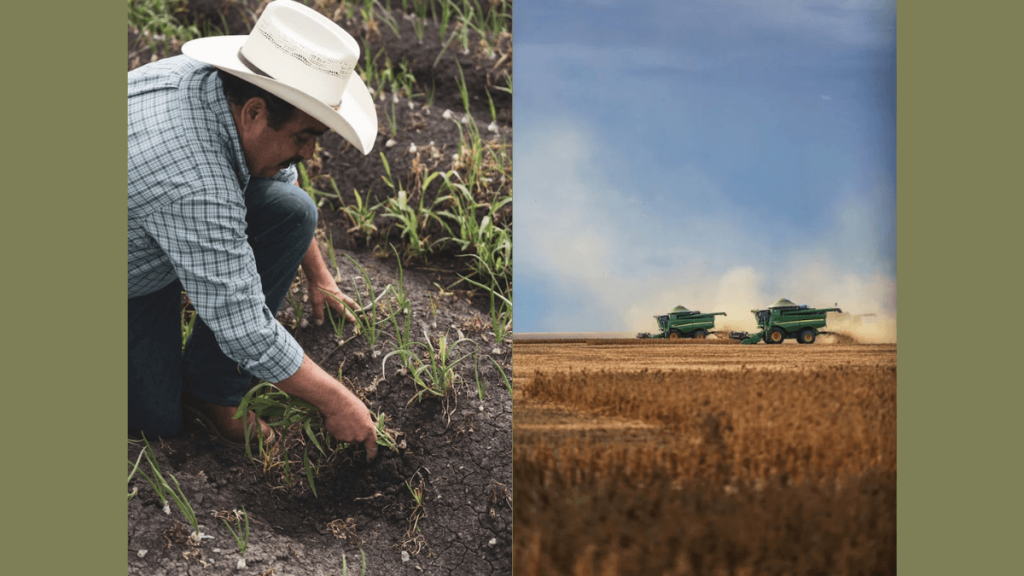
1.2 Horsepower and Engine Power
What is Horsepower?
Horsepower (HP) is a unit of measurement for the power produced by the engine, directly impacting how much work the tractor can do per hour. It is essential to understand the tasks at hand before choosing a tractor with appropriate horsepower. For example, tasks like tilling or pulling large attachments require higher horsepower, while light garden work or smaller fields may require less power.
Matching Tractor Horsepower to Farm Tasks:
For light tasks like fertilization and mowing, a tractor with 40-60 HP will suffice.
For medium tasks such as plowing or hauling, look for tractors with 60-100 HP.
Heavy-duty tasks, like tilling large fields, pulling large equipment, or clearing tough terrain, will require tractors in the 100-200 HP range.
Impact on Performance:
Larger engines provide more power for heavy-duty tasks like tilling, while smaller engines may be better suited for lighter operations. For instance, a high-horsepower tractor is essential when pulling larger implements, allowing the machine to handle more significant workloads with greater efficiency.
1.3 Traction and Tires
Wheeled vs. Tracked Tractors:
Wheeled Tractors: Better for dry, firm soil where traction is needed for lighter, faster operations. They are more maneuverable and tend to be less expensive than tracked tractors.
Tracked Tractors: Ideal for wet, soft, or uneven terrain. Their wide tracks distribute weight evenly, preventing soil compaction and providing superior traction in difficult conditions like mud or snow.
Tire Options and Types:
Radial tires: Best for spreading weight and reducing soil compaction.
Bias-ply tires: Offer more durability and are ideal for handling rougher terrain but may cause greater soil compaction.
Tire pressures should be carefully adjusted according to the tractor’s load to maintain maximum traction and minimize soil damage.
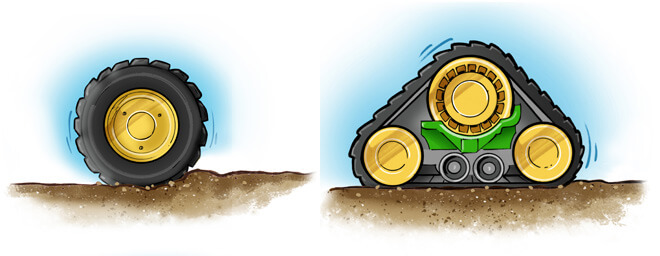
1.4 Fuel Efficiency
Why is Fuel Efficiency Crucial?
Fuel is one of the largest operational costs for farmers. Tractors that consume less fuel help reduce costs over time, particularly in high-demand seasons.
Modern fuel-efficient tractors can cut fuel consumption by up to 20-30% depending on usage, making them more affordable in the long run, even if the initial cost is slightly higher.
Hybrid or Electric Tractors:
Hybrid Tractors: Combine the power of a diesel engine with an electric motor to optimize fuel efficiency and reduce emissions. These tractors are ideal for farms aiming to reduce their carbon footprint without sacrificing performance.
Electric Tractors: Electric models are perfect for smaller farms with lower power needs. They have zero emissions and are becoming more affordable with improvements in battery technology.
1.5 Comfort and Ergonomics
Driver Comfort:
Cabin Design: A well-designed cabin with climate control, adjustable seats, and noise reduction technology improves comfort during long hours of operation.
Features like air conditioning, adjustable seats, and reduced noise levels reduce fatigue, enhance focus, and protect the health of the operator.
Ease of Use: Easy-to-access controls and clear visibility are crucial for operator comfort, particularly when working for long hours in varying weather conditions.
Long-Term Impact:
Comfortable tractors lead to higher productivity as operators experience less strain, reducing workplace injuries and increasing operational efficiency.
1.6 Maintenance and Durability
Long-term cost considerations:
Maintenance Frequency: Some tractors require frequent maintenance to keep them in optimal working condition. Choosing a durable model with fewer repairs can save you significant costs in the long run.
Serviceability: Ensure the tractor you choose has easy access to parts and servicing. Models with advanced diagnostic features and wider service networks tend to have lower maintenance costs.
Choosing a durable tractor:
Brands like MINNUO provide reliable tractors built for long lifespans. Investing in durable, low-maintenance tractors might seem costlier initially but proves to be a smart decision for long-term productivity and savings.
2.Popular Tractor Brands and Models
2.1 Top Brands in the Market:
John Deere – Reliability and High Performance
Overview: John Deere is one of the most recognized and trusted tractor brands worldwide. Known for its robust performance and cutting-edge technology, John Deere tractors are built for a wide variety of farming operations, from small to large-scale farms.
Strengths:
Durability: Known for their long-lasting build, John Deere tractors are designed to handle the toughest farming conditions.
Advanced Technology: John Deere integrates smart technologies like GPS tracking, auto-steering, and telematics, which help improve efficiency and precision farming.
Widespread Dealer Network: John Deere has a vast network of dealers and service centers, making it easy to find parts and support worldwide.
Ideal For: Farmers looking for high performance, long-term reliability, and advanced technological features. The brand offers both compact models for smaller farms and powerful tractors for larger, heavy-duty operations.
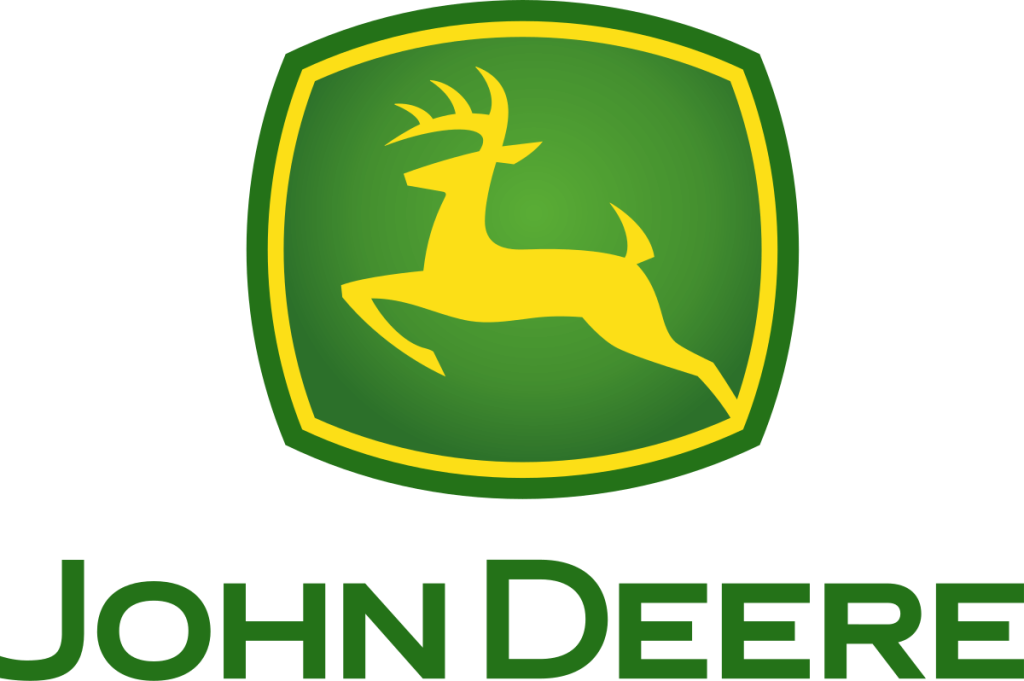
MINNUO – Versatility and Economy
Overview:MINNUO tractors are highly favored for their excellent economy and multi-functionality. Characterized by high cost performance, they have become the first choice for farmers with diverse demands. With reliable power, fuel efficiency and comfort, the MINNUO tractor is highly suitable for farms that require efficient operation.
Advantages:
Versatility: Suitable for agricultural tasks ranging from light to medium, it can efficiently complete various agricultural tasks such as tillage, transportation and harvesting.
Economy: It offers outstanding performance and quality, but at a relatively affordable price, making it suitable for farmers with limited budgets.
Strong performance: Equipped with an efficient power system and optimized fuel efficiency, it is particularly suitable for long-term operation on medium and large farms, ensuring efficient work and cost savings.
Suitable for:
It is suitable for farmers who need a multi-functional and economical tractor, especially for daily agricultural tasks such as plowing, transportation and harvesting.

New Holland – Balanced Power and Fuel Efficiency
Overview: New Holland offers a solid balance of power, fuel efficiency, and technology integration. Their tractors are known for being reliable, efficient, and offering a wide variety of options that cater to both small and large-scale farming operations.
Strengths:
Power & Fuel Efficiency: Known for their energy-efficient engines that reduce operational costs.
Advanced Features: New Holland integrates advanced features like IntelliSteer guidance, which enhances field efficiency.
Comfortable Design: New Holland tractors are designed with user comfort in mind, providing better ergonomics for operators during long working hours.
Ideal For: Farmers seeking a balance of affordability, efficiency, and advanced features. Excellent for those looking to increase productivity with fuel-efficient tractors.

Kubota – Compact and Efficient for Small-Scale Farming
Overview: Kubota is a brand particularly known for producing compact tractors designed for smaller farms. These tractors are ideal for maneuvering in tight spaces and handling less-intensive tasks.
Strengths:
Compact Size: Kubota tractors are smaller and lighter, making them easier to handle in narrow spaces and for light to medium tasks.
Ease of Use: User-friendly designs make them ideal for new or smaller-scale farmers who may not require heavy-duty machinery.
Efficiency: Kubota tractors are fuel-efficient and well-suited for intensive use in small to medium-sized fields.
Ideal For: Small to medium-sized farms that require efficient, affordable tractors for tasks such as tilling, mowing, and light plowing.

2.2 Specific Models:
John Deere 5055E (Small to Medium Farms)
Features:
Horsepower: 55 HP
Fuel Efficient: Designed to optimize fuel consumption, reducing long-term operational costs.
Transmission: 9/3 transmission system, ideal for farm tasks requiring varying speeds.
Best For: Small to medium-sized farms looking for a reliable tractor for tilling, hauling, and light harvesting.
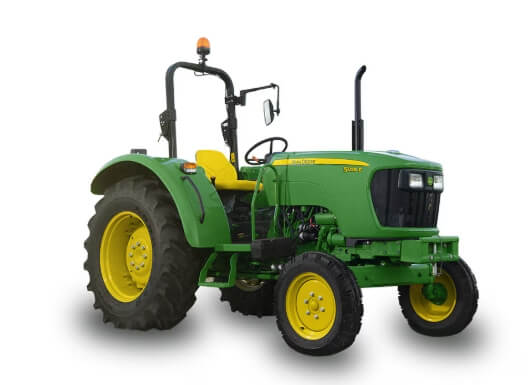
MINNUO 4707 (Medium to Large Farms)
Features
Horsepower: 75 horsepower, meeting the power demands of medium to heavy tasks.
Fuel efficiency: Equipped with an advanced fuel injection system, it enhances fuel efficiency during long-term operation and reduces operating costs.
Comfort: The spacious cab is equipped with a climate control system to ensure that the operator remains comfortable during long working hours.
Best application: Suitable for farms that require efficient and multi-functional support, it can handle medium to heavy tasks such as soil turning and field preparation.
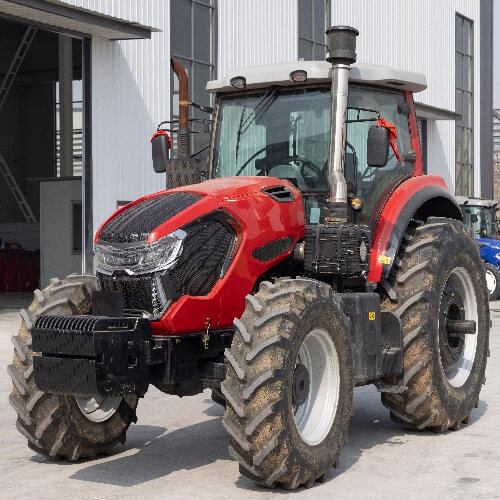
New Holland T7.190 (Large Farms)
Features:
Horsepower: 190 HP
Advanced Technology: Offers GPS guidance, automated steering, and a high-tech hydraulic system for optimized performance.
Fuel Efficient: Equipped with a fuel-efficient engine designed to minimize consumption during long hours.
Best For: Large-scale operations requiring advanced technology and high horsepower for tasks like heavy plowing, tilling, and continuous hauling.
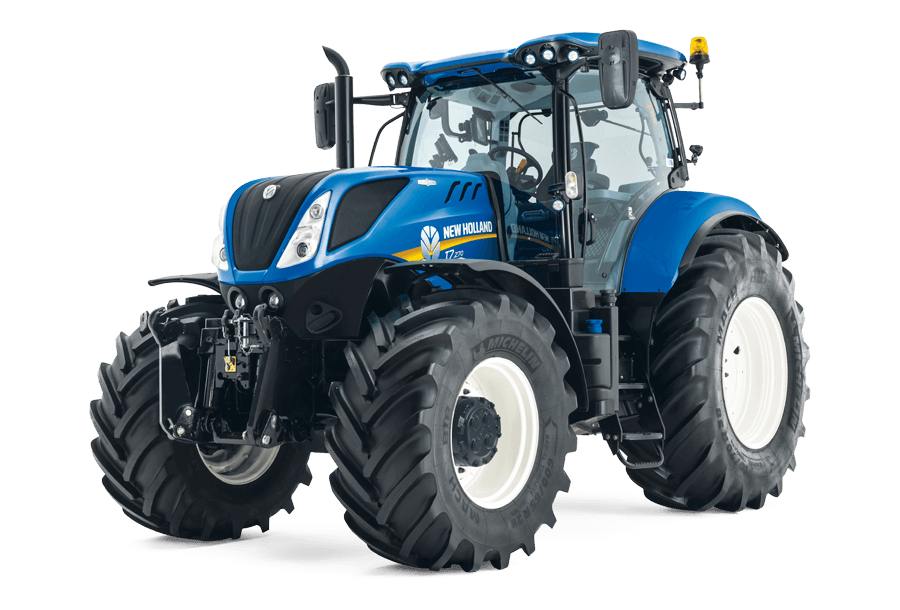
Kubota L3901 (Small Farms)
Features:
Horsepower: 37.5 HP
Compact and Maneuverable: Perfect for working in smaller fields and tight spaces.
Efficient and Affordable: Ideal for small farms seeking a balance of power, size, and fuel efficiency.
Best For: Small-scale farms where space constraints and maneuverability are key, such as vegetable farming or orchards.
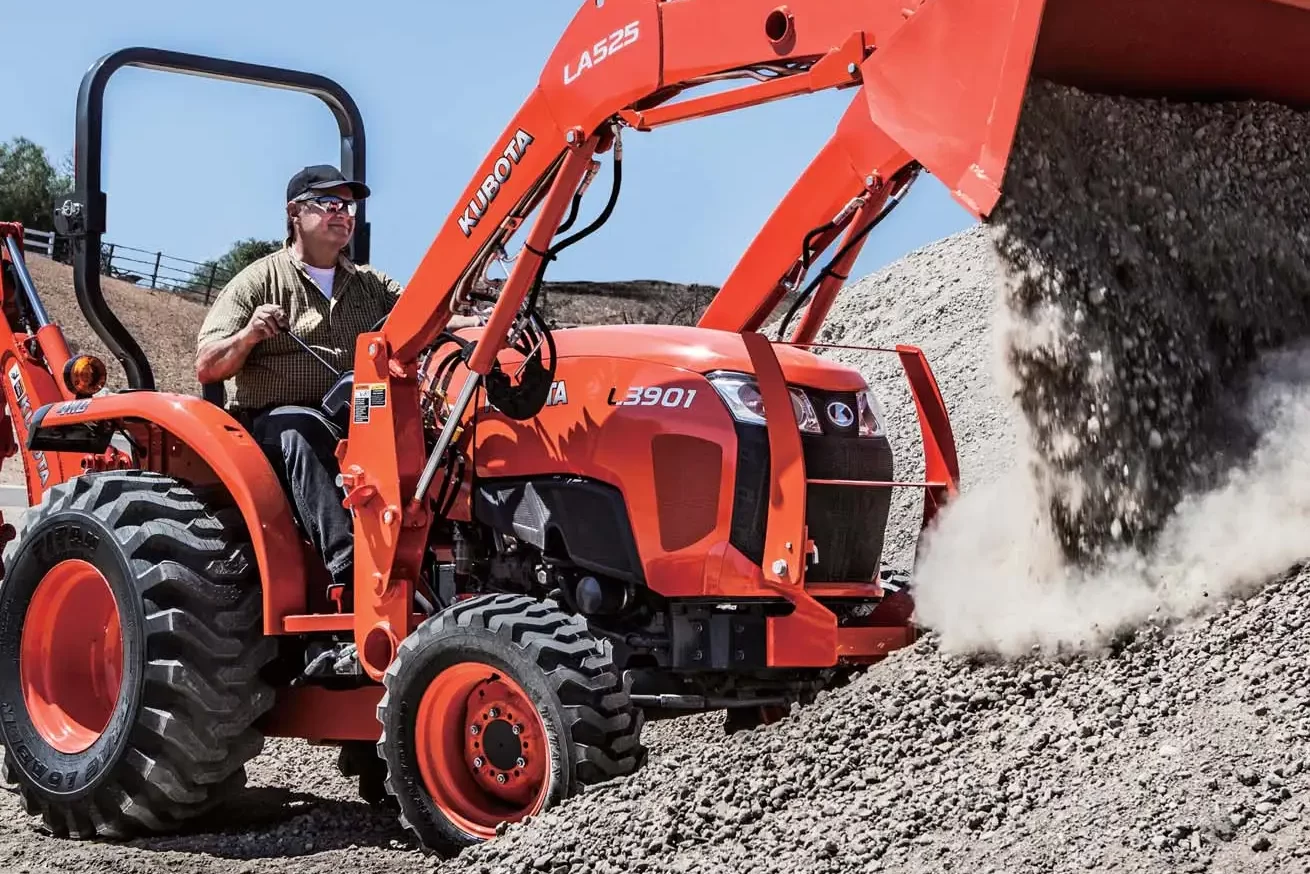
3. Matching Tractors to Specific Farming Needs
3.1 Crop Type and Terrain
Tillage and Plowing:
Heavy-Duty Tractors for Tillage and Plowing Tasks
Overview: For tasks like plowing, tilling, and soil preparation, a tractor’s power and durability are crucial. These tasks require a tractor with sufficient horsepower and strong engine performance to break hard soil and handle large, demanding equipment like plows, disc harrows, and cultivators.
Recommended Features:
High Horsepower: The more horsepower a tractor has, the more easily it can handle the rough demands of tillage and plowing.
Strong Transmission: A powerful transmission system is necessary to efficiently transfer engine power to the implement, ensuring smooth operation and preventing wear.
Durable Construction: Heavy-duty components, such as reinforced frames and robust axles, are essential for working with large, heavy tillage implements.
Best Use: These tractors are ideal for farms where tillage is a major part of the operation, including those with extensive crop planting or preparing fields for large-scale agricultural activities.
Hauling and Transporting:
Choosing Tractors with the Necessary Power and Durability for Hauling
Overview: Hauling tasks require tractors with both strength and stability. When transporting heavy loads such as harvested crops, fertilizers, or equipment, a tractor must have high towing capacity and stability to ensure safe and efficient operations.
Recommended Features:
High Towing Capacity: Tractors with greater engine power and torque are able to tow heavy loads, making them suitable for long-distance hauling.
Wide Tires or Dual-Wheel Configuration: Wide tires or dual-wheel configurations reduce soil compaction and increase the stability of the tractor while hauling heavy loads.
Hydraulic Power: A strong hydraulic system allows the tractor to lift and transport large loads without compromising stability or power.
Best Use: These tractors are ideal for farms with large transportation needs, such as those that need to move heavy equipment or large harvests over substantial distances.
Rice, Wheat, and Other Crops:
Specialized Tractors Designed for Specific Crop Types and Their Field Conditions
Overview: Certain crops, such as rice and wheat, require specialized equipment for harvesting, planting, and field preparation. Tractors for these crops are designed to handle specific soil types and farming techniques that maximize yield and efficiency.
Recommended Features:
Adjustable Widths: Tractors designed for rice or wheat may need adjustable widths to maneuver through narrow rows and avoid damaging crops.
Low-Pressure Tires: Specially designed tires for rice paddies, for example, allow tractors to float on waterlogged fields without causing damage or excessive soil compaction.
Specialized Harvesting Attachments: Wheat tractors may include additional features like headers that are tailored for grain harvesting to avoid crop loss during the process.
Best Use: These tractors are suited for farms that cultivate specific crops requiring specialized tools and operations, such as rice farming that needs water-resistant equipment or wheat fields requiring precision harvesting.
3.2 Climate and Soil Conditions
How Tractors Can Be Selected for Different Soil Conditions:
Overview: Soil condition is a critical factor in choosing a tractor. Different soil types, such as rocky, sandy, or clay-based soils, require different tractor configurations to maximize efficiency while minimizing wear and tear on the tractor and soil.
Rocky Soil: Tractors with durable undercarriages, heavy-duty tires, and robust frames are essential for navigating rocky terrain. These tractors need to be able to withstand bumps and impact without risking structural damage.
Sandy Soil: For sandy soils, tractors with lighter construction and wide tires are preferable as they distribute the weight more evenly, preventing the tractor from sinking into the soil.
Clay Soil: In clay-heavy soils, tractors need to be equipped with powerful engines and traction systems to prevent slippage. They also require high durability to prevent damage caused by wet, sticky soil.
Key Considerations: Soil type impacts traction, fuel efficiency, and the type of equipment that can be used. Tractors should be chosen based on the soil’s capacity to handle heavy or light loads without causing soil compaction, which can affect crop yield in the long term.
Selecting Between Wheeled and Tracked Tractors Based on Soil Compaction and Traction Needs:
Wheeled Tractors: These are ideal for relatively smooth fields with softer soil and where quick movement across the field is needed. Wheeled tractors are great for flat or slightly uneven terrains, providing faster travel times and flexibility.
Advantages: Easier to navigate on roads, faster speeds, and lower fuel consumption in light conditions.
Limitations: Can cause soil compaction, especially when used on wet or heavily worked fields.
Tracked Tractors: Best for tough conditions like wet, rocky, or steep fields where maximum traction is needed. They spread the tractor’s weight over a larger surface area, minimizing soil compaction and ensuring better traction.
Advantages: Superior in slippery or uneven terrain, they reduce soil compaction and maintain stability.
Limitations: Slower speeds and higher fuel consumption, and tracked tractors often have higher maintenance costs compared to wheeled tractors.
Key Considerations: For farms with varying terrain, the decision between wheeled and tracked tractors comes down to the kind of tasks being performed and the condition of the soil. Farmers may opt for tracked tractors in areas with heavy soil or wet fields, while wheeled tractors may be the best choice for fields with better-drained soils or those requiring faster movement.
Conclusion
Choosing the right farm tractor requires careful consideration of several key factors, including your farm size, crop type, engine power, and specific tasks to be performed. The tractor’s transmission type, fuel efficiency, and additional features such as GPS and automation can significantly impact both operational efficiency and long-term profitability. Additionally, it’s essential to assess maintenance needs and choose a durable, reliable model that aligns with your operational budget.
Farmers should give priority to tractors that match the specific needs of their farms, taking into account field conditions, crop types and operation scales. Although the initial investment is important, paying attention to efficiency, operating costs and the availability of after-sales service can bring greater returns throughout the tractor’s life cycle. MINNUO offers a range of durable and fuel-efficient tractors designed to enhance farm performance, while providing reliable after-sales service and financing options. By making wise choices, farmers can ensure the success and growth of their agricultural business.

